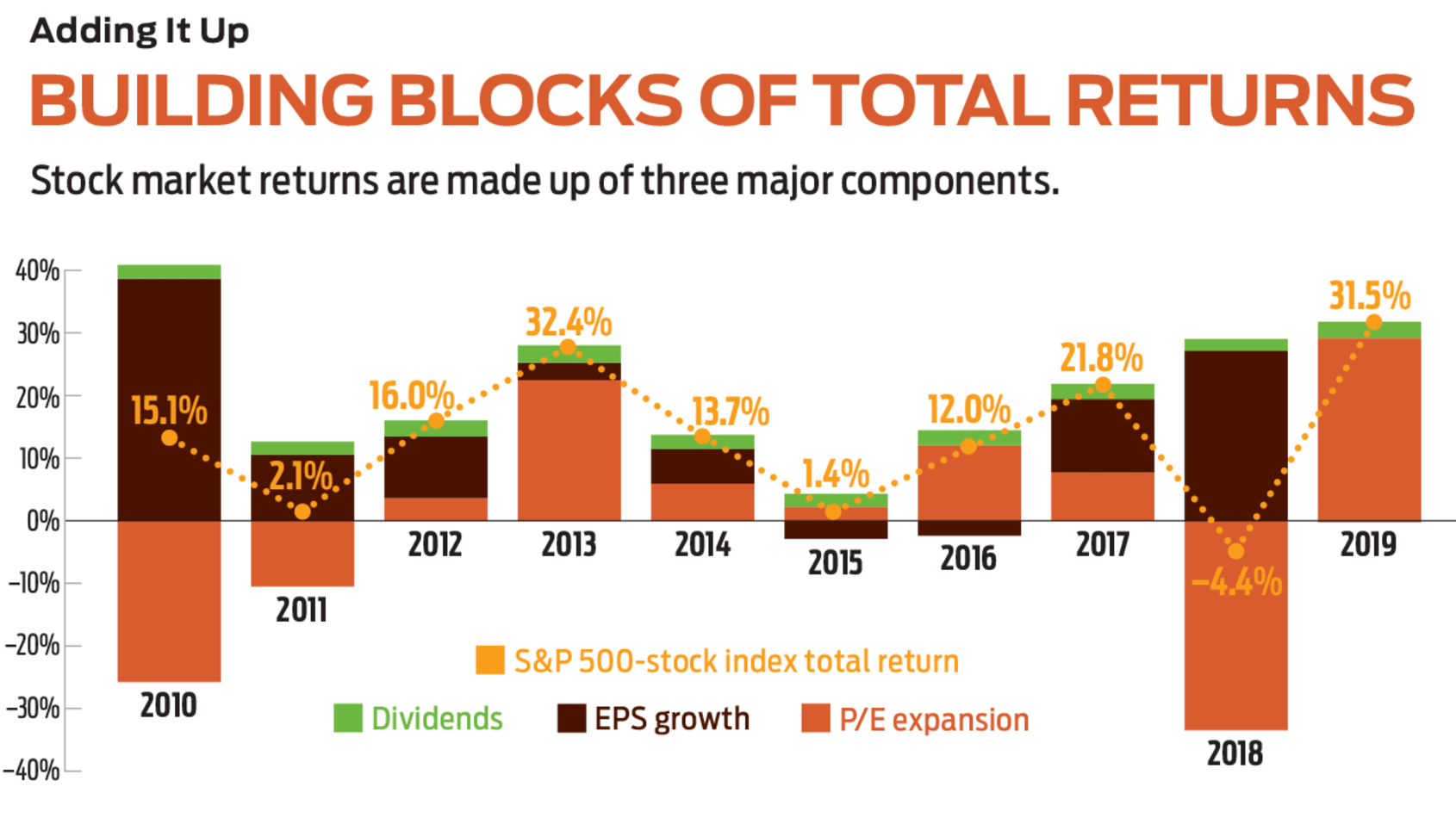Are Stock Returns Discreet or Continuous
We're told over and over that growth in corporate earnings drives stock market returns. If that's the case, what has been going on lately? In 2019, Standard & Poor's 500-stock index posted a total return of 32%, but corporate earnings barely moved. In 2018, with corporate profits solidly up, the market surrendered 4.4%. The truth is, earnings are only part of the picture when it comes to stock market returns. Understanding the whole mosaic can give you insight on how to manage your portfolio.
You can divide stock returns into three primary drivers, which can work in concert or at odds: earnings growth, valuation and dividends. In a vacuum, earnings growth is the easiest to understand. Say a stock costs $100 per share and posts earnings of $10 per share. If earnings grow by 5%, to $10.50, then the stock price should grow by a commensurate 5%, to $105, producing a 5% return.
But stock prices reflect what investors expect in the future. Their confidence or negativity about a stock's potential is expressed in its valuation, commonly represented by a measure such as the price-earnings ratio. If investors are bullish on a stock, they'll bid up the price, thus "expanding" the stock's price-earnings multiple and boosting return.
Subscribe to Kiplinger's Personal Finance
Be a smarter, better informed investor.
Save up to 74%
Sign up for Kiplinger's Free E-Newsletters
Profit and prosper with the best of Kiplinger's expert advice on investing, taxes, retirement, personal finance and more - straight to your e-mail.
Profit and prosper with the best of Kiplinger's expert advice - straight to your e-mail.
Say the $100 stock with $10 in earnings has a P/E of 10. Should confident investors bid the price up to 12 times earnings, the stock would now trade at $120, a 20% return. In 2019, 29 percentage points of the S&P 500's 32% return came from valuation expansion. "Valuation expansion last year was in anticipation of earnings growth this year," says analyst Willie Delwiche, at investment firm Baird.
Understanding where the market's valuation stands compared with historical averages can give investors a sense of market risk, says Delwiche, because valuations tend to revert to mean levels over time. At 18 times expected year-ahead earnings, the S&P 500 trades above the 10-year average of 15. That doesn't mean prices will come down imminently, Delwiche says, but it could signify that investors should explore less-volatile pockets of the market or consider investing overseas, where stocks are trading closer to historical norms.
Count on dividends. Income investors know the power of the third major driver of total returns: dividends. Since 1955, earnings growth has contributed 63% of the S&P 500's total annual return, on average, followed by dividend payments (28%) and expansions or contractions in valuation (9%), according to Calamos Wealth Management.

(Image credit: Calamos Wealth Management)
Of those factors, dividends are the least volatile and don't ever detract from the market's return. As a result, reinvested dividends have an outsize impact on the market's return over time. From the end of 1970 through 2019, 78% of the total return of the S&P 500 came from the compound growth of reinvested dividends, according to analysts at the Hartford Funds. The message is clear, says CFRA investment chief Sam Stovall: "Dividends reward the buy-and-hold investor."
What will drive returns in 2020? Calamos Wealth Management chief investment officer Reed Murphy believes the baseline case is for valuations to hold relatively steady and for earnings growth for companies in the S&P 500 to come in below current estimates of 9%-plus. He suggests the S&P 500 is likely to return 7% to 8% in 2020, including a 1.9% dividend yield.
Source: https://www.kiplinger.com/article/investing/t052-c028-s002-what-drives-stock-returns.html
0 Response to "Are Stock Returns Discreet or Continuous"
Publicar un comentario